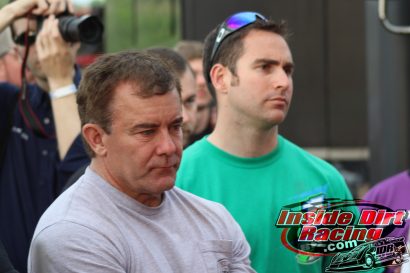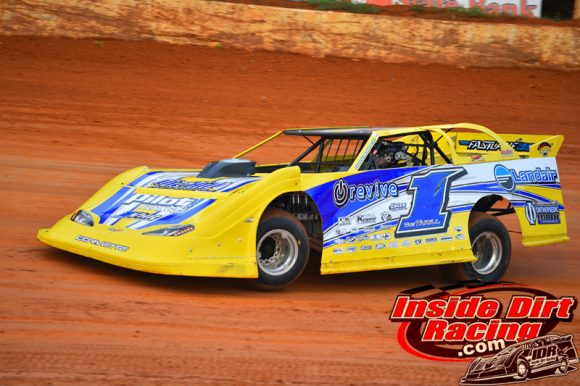*This is the second of two pieces based on an interview with Vic Hill. In this article, Vic discusses the evolution of racing engines over the past several years. In the first of these two pieces, he discussed the current state of local, regional and national racing. Here is a link to that article –> Vic Hill offers views on local, regional and national racing
Vic Hill is certainly an accomplished Dirt Late Model racer. He has numerous track championships and feature wins(including a recent Southern Nationals victory at Boyd’s Speedway) to prove that. But when his name is mentioned in local circles or nationwide, the first thought that will come to mind for many followers of the sport is his engine building prowess.
As a matter of fact, Hill’s power plants were used by driver Brandon Overton and his Billy Franklin Enterprises team during the recent Southern Nationals in which they won five of the nine contested events. Hill has provided engines for some of the most well known names in the sport who have won big races with his motors under their hoods. Scott Bloomquist campaigned Hill’s engines for several seasons and Brian Birkhofer won the 2014 Knoxville Nationals with a Vic Hill Racing Engine in his ride.
The former Richard Childress Racing and Morgan-McClure Racing employee who now produces power out of his own shop in Mosheim, Tennessee says that a great deal has changed in his business over the years, particularly within the last decade. Hill says that the desire for more power is always there in all forms of racing, including dirt racing. However, the development of more power comes at a cost.
“I’m telling you what, it has evolved,” Hill pointed out in an interview with InsideDirtRacing.com. “Over the last six years or so it’s really taken a jump because there’s more things out there available. Way back in 2006 when I was doing all the R&D for Morgan-McClure on the R07 and the R03, which is a wide bore block, we were the first ones to actually build one. We did it for Scott Bloomquist back then and he had a phenomenal year, but it was kind of a one off deal that we did and people started seeing it and the manufacturers started seeing it and they started making them. That really launched our power, and it actually launched the cost too. I don’t know if it’s made racing any better, but everybody wants more power.”
While the internal combustion engine has been around for over 100 years, the technology involved in all the pieces and parts that go into those machines continues to evolve.
“It’s the technology that goes into the intake manifolds, the cam combinations, and the cylinder head design,” Hill explained. “We have a big air pump and we’re trying to fill that thing and evacuate it as efficiently as we can so combustion chambers get more efficient, ring packages get more efficient, and in every little area there’s somewhere you can say we’re here now and I think we can improve that.”
Small gains come with big price tags with each advancement leading to another. And when everyone else is adding more power, the competition has to do the same thing to keep up.
“You’ve got three or four more horsepower here and three or four horsepower there, and before you know it, we’ve got a hundred more horsepower than we had ten years ago,” Hill went on. “So like I said, it’s an ever changing thing. You’re never going to fix the pricing of it but with the weekly stuff you’re going to have to really think hard when you make your rules.”
Hill says it isn’t just the new technology that has driven the costs of racing higher. Other factors outside of the actual building of the engines has contributed to the recent escalation.
“Marketing is one of the things, with Roush-Yates getting involved in this, and that’s a good engine but it’s pretty high,” the veteran racer and engine builder stated. “It set the mark because one of those things is about $12,000 to $15,000 more than the Chevrolet that we do and they run basically the same.”
Hill adds that the marketing that came from the NASCAR side of things was successful in convincing those with the resources to believe that they had to have that particular brand.
“I build more Chevrolets than Fords but they did a good job marketing and so a lot of people who race and are financially able to buy them felt like they had to have one,” Hill said. “Then you feel like you’ve got to have that to compete, and at a lot of places it does make a difference especially in qualifying.”
With engine builders now producing as much as 900 horsepower, one has to wonder just how much higher those numbers can go. Builders such as Vic Hill will always be searching for that next advancement to make their engines better than those of the competition.








